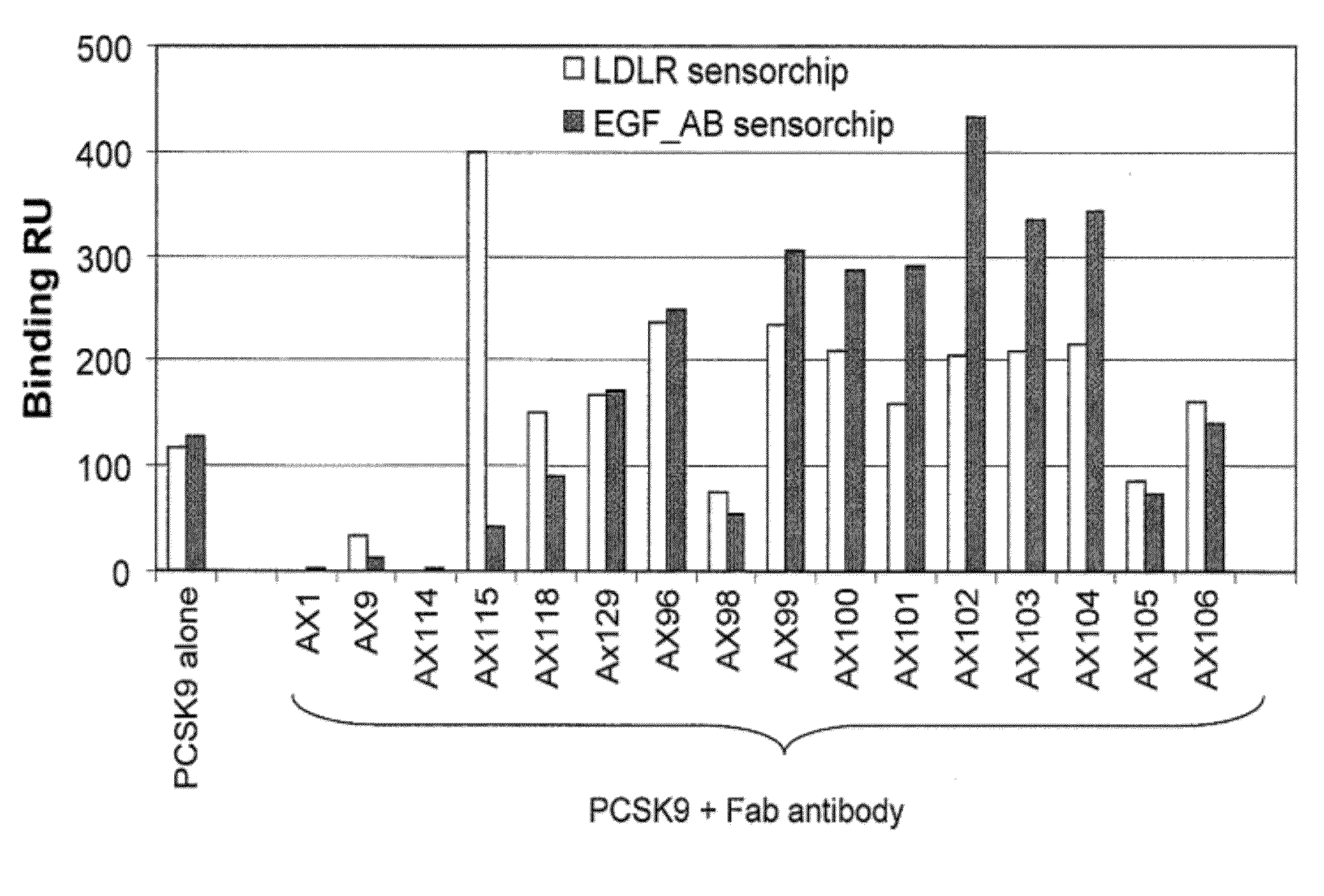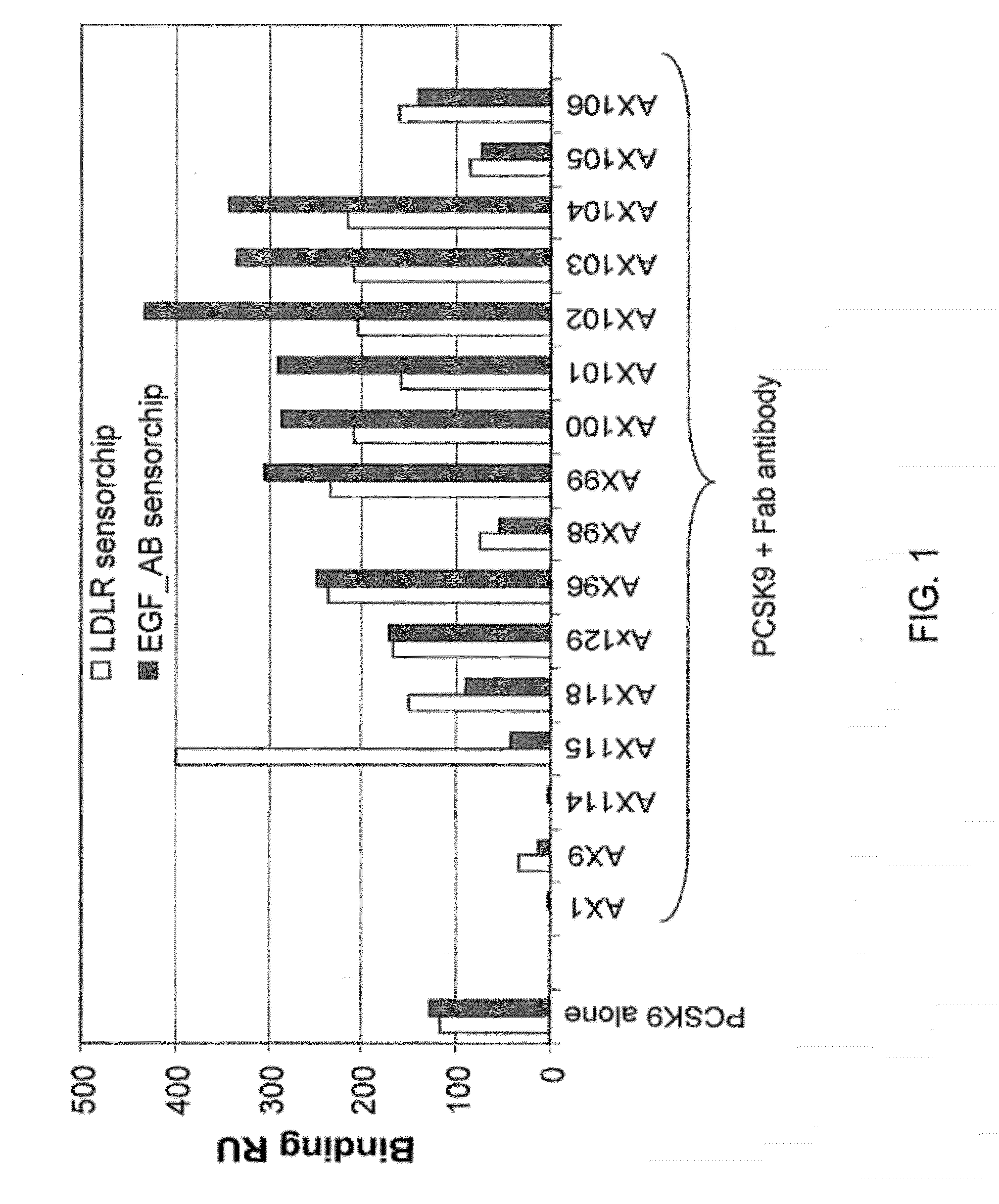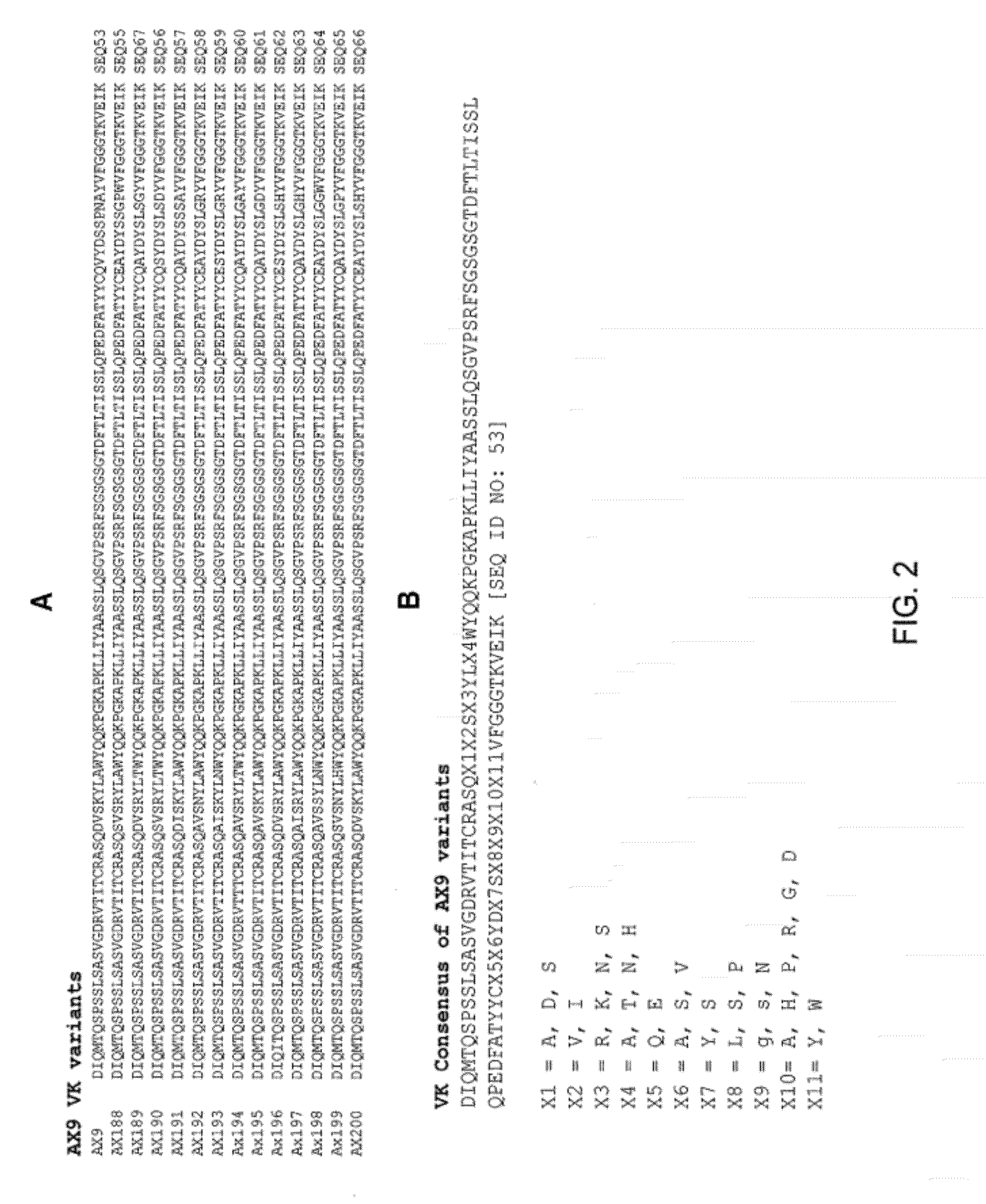Ax1 and ax189 psck9 antagonists and variants
a technology of psck9 and antagonists, which is applied in the direction of drug compositions, fused cells, metabolic disorders, etc., can solve the problem of compromising the liver's ability to remove ldl cholesterol from the circulation
- Summary
- Abstract
- Description
- Claims
- Application Information
AI Technical Summary
Benefits of technology
Problems solved by technology
Method used
Image
Examples
example 1
Abmaxis PDL1 Phage Library Panning Against PCSK9 Protein
[0183]A synthetic human Fab library was panned against human PCSK9. Antigen protein PCSK9 was coated on Maxisorp well stripe (Nuns-Immuno Modules) at a concentration of 1-10 μg / ml for overnight at 4° C. Multiple wells of antigen were prepared for each library. 5% milk in PBS was used to block the coated wells at room temperature for 1-2 hours. After a wash with PBS, 100 μl of phage library solution / well (usually 1-5×1012 in 2% milk-PBS) was added into 4 parallel wells, and incubated for designed length of time (usually 1-2 hours). After several washings with PBST and PBS, the bound phages were eluted from the wells with fresh-prepared 1.4% triethylamine in ddH2O (10 minutes incubation at room temperature), followed immediately with neutralization by adding 50 μl of 1M Tris-HCl (pH 6.8).
[0184]The eluted, enriched phage pool was further amplified through the following steps: First, TG1 cells were infected with eluted phages at 37...
example 2
Fab ELISA Screening for PCSK9 Binders
[0186]Over 10,000 clones from third round panning were picked by MegaPix Picking Robot (Genetix), and inoculated into 384-well plates with 60 μl of 2YT / 2% Glucose / carbenicillin for overnight culture at 30° C. with 450 rpm shaking. The duplicated plates were made by transferring ˜1-3 μl overnight culture from each well into new plates with 50 μl / well of 2YT / 0.1% Glucose / carbenicillin. The duplicated plates were incubated in a shaker at 30° C. for 6 hours, then 10 Owen of IPTG was added for a final concentration of 1 mM. After overnight culture at 22° C., the soluble Fab in IPTG-induction plates were released by adding lysozyme into each well.
[0187]To detect the antigen binding activity of soluble Fabs generated from the above experiment, the antigen plates were generated by overnight coating of 5 μg / ml human PCSK9 antigen. After blocking with 5% milk-PBS and a wash with PBST, 15-20 μl of Fab samples from IPTG-induction plates was transferred into ...
example 3
Fab Protein Expression and Purification from TG1 Cells
[0189]50 ml of overnight cultures for individual clones in 2YT / 2% glucose / Carbenicillin 100 μg / ml were grown in 37° C. shaker incubator. In the second day, 750 mL to 1 L of 2YT / 0.1% glucose / 100 μg / mL Carbenicillin was inoculated for each clone by transferring 5-10 ml of the overnight culture. The cultures were grown at 30° C. with shaking for approximately 3-4 hours until OD600˜1. IPTG was added to the culture to reach the final concentration of 0.1-0.5 mM. After overnight IPTG induction at 22° C., the cells pellets were collected by centrifugation at 10,000 rpm for 10-15 minutes, to proceed for periplasmic preparation.
[0190]Soluble Fabs were extracted from cell periplasm. The periplasmic preparation was performed as follows. The TG1 pellet was re-suspended in 20 mL pre-chilled PPB buffer (20% Sucrose+2 mM EDTA+30 mM Tris, pH=8), and incubated on ice for 1 hour. The supernatant with soluble Fab was collected by centrifugation. Su...
PUM
| Property | Measurement | Unit |
|---|---|---|
| Fraction | aaaaa | aaaaa |
| Molar density | aaaaa | aaaaa |
| Molar density | aaaaa | aaaaa |
Abstract
Description
Claims
Application Information
 Login to View More
Login to View More - R&D
- Intellectual Property
- Life Sciences
- Materials
- Tech Scout
- Unparalleled Data Quality
- Higher Quality Content
- 60% Fewer Hallucinations
Browse by: Latest US Patents, China's latest patents, Technical Efficacy Thesaurus, Application Domain, Technology Topic, Popular Technical Reports.
© 2025 PatSnap. All rights reserved.Legal|Privacy policy|Modern Slavery Act Transparency Statement|Sitemap|About US| Contact US: help@patsnap.com



